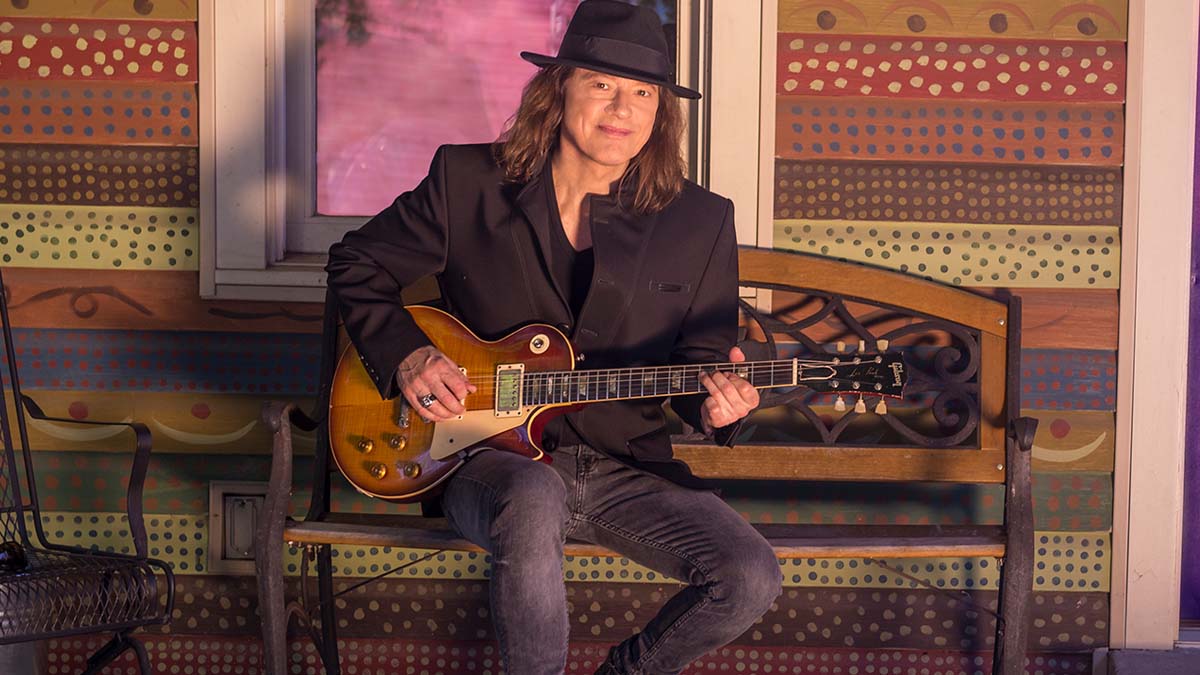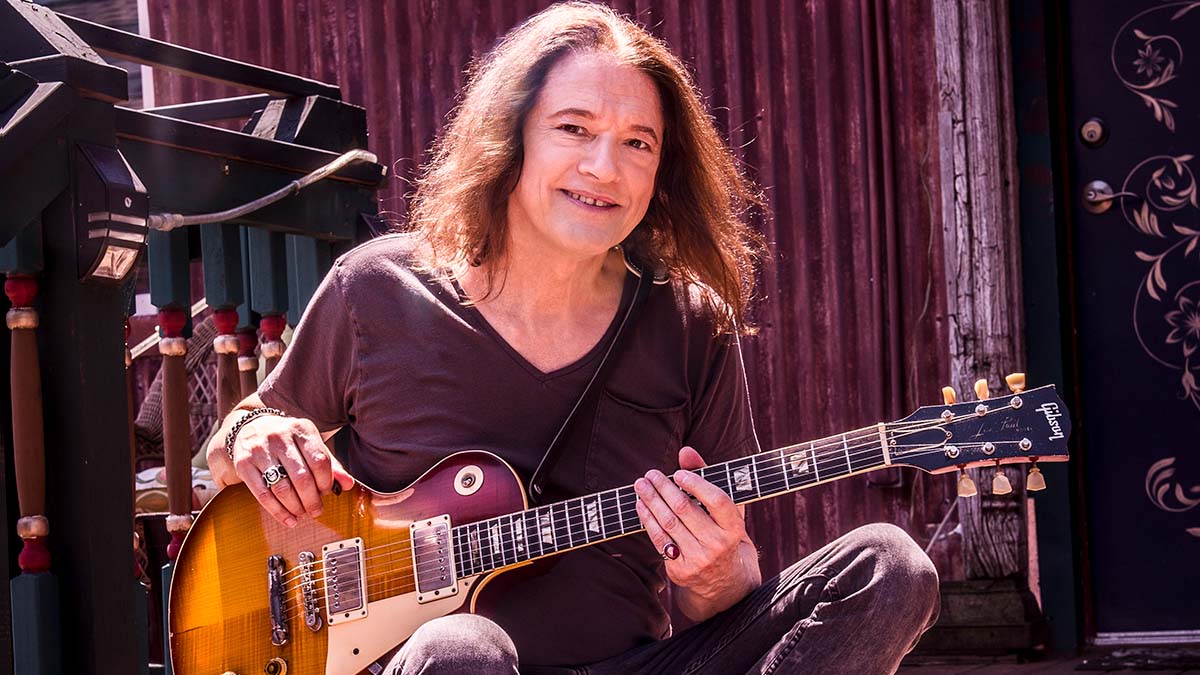Robben Ford discusses the tones behind the tracks on his first instrumental album in over 20 years
On Pure, Ford took the opportunity to take a completely different approach to recording

What were the main differences in your process when you recorded Pure?
“Well, the main difference was that, rather than take a band into a studio and cut a record, I built the tracks from the ground up with my co-producer, Casey Wasner. Then I’d bring in a bass player to put a bass track down after I’d already laid something down that dictated the approach, you know? I just had to have complete control. So we would literally build the track, Casey and I.
“There are three songs that we recorded with bands: the slow blues Blues For Lonnie Johnson, a song called Go and If You Want Me To. They were done in a studio with an actual rhythm section, but for everything else on the album the drums were overdubbed and the bass was overdubbed after I created the template.
"‘This is the feel that I want. This is the timing’, you know? ‘I want you to play this bassline,’ rather than have somebody fishing around for their own. I’ve never made a record like this before and I’m really glad I did. It’s a real different album in that way.”
Let’s take a specific track – Balafon, for instance. Can you talk us through that?
“Well, Balafon and Pure were the first two things that I wrote for the record. So I was clearly looking for something very different at the outset. On Balafon, the melody is played on a 1964 '355 that I’ve had for many years and had little opportunity to use. Then it goes into that vamp and I’m using an acoustic guitar, a D-25, my ’60 Tele and also my 1952 Telecaster.
You create a mood and emotion… That’s one of the ways that we use the studio: crank up the reverb so it sounds like you’re outside
“So there are three instruments playing that one single line as well as the bass; it’s kind of in three pieces, that particular composition. The little thing in the melody is just a little vamp or a little arpeggio I’m playing and then it kicks into that real strong bassline and there’s a guitar riffing in the background, which is an SG plugged into a Little Walter 15-watt amplifier cranked to the hilt. That’s why it sounds real raw and aggressive, you know?”
All the latest guitar news, interviews, lessons, reviews, deals and more, direct to your inbox!
The riff section on that track really sounds enormous.
“That aspect of things has a lot to do with how we use the studio: different reverbs, also different room sounds. The use of reverb, of course, has been going on for a long time. You record in a room and that’s your room sound, and a lot of places are dead rooms, or super live rooms. So we’re able to adjust that through technology.
“We can create a small room for that amplifier, even if it was recorded in a large room. And there’s a ton of usage of different reverbs and room sounds on the album. We would sit back and listen to what we had and think, ‘Man, the guitar’s too dark', or ‘The guitar’s too bright', or ‘The guitar sound kind of chokes. Can we put it in a large room, see what that does?’ And a ton of that is going on on this record.”

Were there a lot of tracks used for the guitar on the album?
“There are literally scores of tracks, you know what I mean? You record your guitar and that’s one track and you might even have two microphones on the amp. And then there’s a track for the room sound and a track for the reverb sound, and then there’s a track for maybe a little effect that we put on the guitars.
“You would have literally five tracks for one instrument, and we’d maybe do that to everything you hear on the record. Then we’d squash something, or run it to a different amplifier plug-in. Not literally a different amp but a plug-in, just to distort the hell out of it. Things like that. I think at times on one song you’re hearing upwards of 100 tracks being engaged at one time. It creates a huge palette.”
There is some huge reverb on the track A Dragon’s Tail.
“Yeah, there’s this big space there and it’s like, ‘Whoa, what’s that? What’s going to happen next?’ You create a mood and emotion – a feeling. That’s one of the ways that we use the studio: crank up the reverb so it sounds like you’re outside somewhere.
“On that track I’m using a ’65 Epiphone Riviera, that ’52 Telecaster and the D-25 acoustic. We would get the D-25 and run the signal through an amplifier plug-in so it sounds kind of distorted, funkier, edgier. Then put some kind of reverb on it and, of course, EQ is used quite a bit. The Epiphone is the most distorted – it’s just kind of exploding. Short delay, maybe, to fatten it up a little bit.”
I listen to a lot of Indian music and, I mean, those [artists] are just insane musicians. It’s a very deep classical tradition
The track Go displays your funkier side and you enrolled Vulfpeck drummer Nate Smith for it, too.
“Yeah, he’s a jazz drummer, but he can also play funk very well. I heard that he’d moved to Nashville and I got his number, called him up and said, ‘Hey, man, would you be free for a session for my new record?’ He said, ‘Sure,’ and so I wrote two songs with him in mind.
“It was recorded with just guitar, bass and drums. I did actually bring a saxophone player in to play on it, but that was just so we had somebody to improvise and extend the song beyond the melody. Then my guitar solo is overdubbed with my ’60 Tele and the Dumble Overdrive Special – no overdrive, very clean.”
The title track represents something of a stylistic departure for you.
“Well, I listen to a lot of Indian music and, I mean, those [artists] are just insane musicians. It’s a very deep classical tradition. I certainly can’t do it, but I’ll listen to something that I like and figure out the scale. So I figured out the scale from this one piece of music that I really dig and just approached it with the sensibility of Indian music. It’s like a raga.
“I haven’t studied Indian music; I don’t sit down and take licks off of Indian music, I have just listened to a lot of it. It’s really just a melody that came to me that sounded exotic, played on that ’64 SG through that 15-watt Little Walter amplifier, cranked.
“I wasn’t happy with my improvisation on it and I had to think about it a little bit further and basically came up with something different than what I originally had. It was done with a Paul Reed Smith McCarty model with some modified pickups that Paul had made for me. It’s just straight through improvisation – no overdubs, no edits.”
- Pure is out now via EARMUSIC.
With over 30 years’ experience writing for guitar magazines, including at one time occupying the role of editor for Guitarist and Guitar Techniques, David is also the best-selling author of a number of guitar books for Sanctuary Publishing, Music Sales, Mel Bay and Hal Leonard. As a player he has performed with blues sax legend Dick Heckstall-Smith, played rock ’n’ roll in Marty Wilde’s band, duetted with Martin Taylor and taken part in charity gigs backing Gary Moore, Bernie Marsden and Robbie McIntosh, among others. An avid composer of acoustic guitar instrumentals, he has released two acclaimed albums, Nocturnal and Arboretum.

